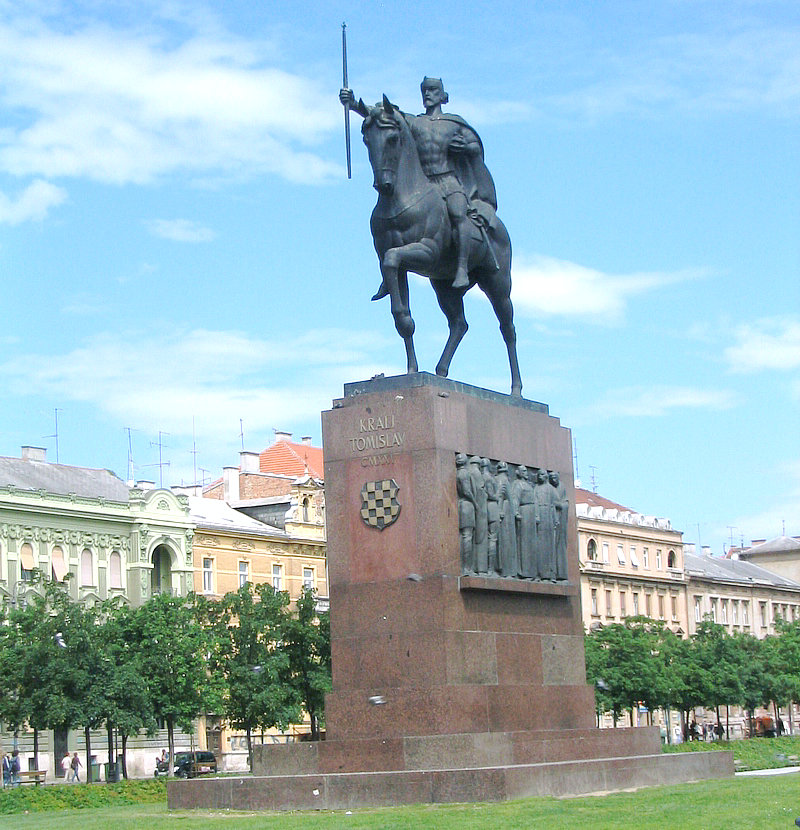Robert Frangeš-Mihanović


Robert Frangeš-Mihanović (born October 2, 1872 in Sremska Mitrovica, dead January 12, 1940 in Zagreb), was an Austro-Hungarian and Yugoslav sculptor. He was a pioneer of modern Croatian sculpture. His opus spans the styles of academism, symbolism and modernism (impressionism). In his mature phase, he developed a personal style of free realism. In his development, he went through the stages of academism, from symbolism to modernism, ie the earliest examples of impressionistism in Croatian sculpture, and in his full maturity he made his own expression in the free realistic modeling of the character. He was also one of the initiators and organizers of the artistic life in Zagreb at the turn of the twentieth century.
He was born in Sremska Mitrovica, at the time part of Austria-Hungary (now in Serbia). He graduated from the School of Crafts in Zagreb in 1889. Then he went to Vienna, where he studied at the Arts and Crafts School (1889–94) and the Art Academy (1894/95). He continued his studies in Paris (1900/01), where he met Auguste Rodin and M. Ross.
Frangeš Mihanović taught at the School of Crafts in Zagreb (1895–1907). He also taught sculpture at the Art Academy. He was one of the initiators and organizers of the artistic life in Zagreb at the turn of the centuries, as one of the founders of the Croatian Artists’ Society (1897), the folklore society of Lado (1904), and the Art Academy (1907). He founded the bronze foundry at the Academy and brought the first founders. He was a member of several academies: JAZU, SANU and the Prague academy.
At the beginning of the First World War Frangeš-Mihanović became a one-year volunteer in the k.u.k. Army. He soon endeavored to be accepted as a martial artist in the k.u.k. War press headquarters. He was taken up on September 15, 1915, and was thus able to follow the sculpture until the end of the war (the KPQ took him to the stand list until August 11, 1918). Several of his works from this period have been preserved in the collections of the Military History Museum in Vienna.
He died in Zagreb in 1940. Along with Rudolf Valdec, Frangeš Mihanović was a pioneer of modern Croatian sculpture.
Works:
His medals and certificates with figurative and animal themes – Heracles the Bull (1899),Vineyard Workers (1900), Turkey (1904), Laborer (1906) – are the starting point of Croatian medal making. He created statuettes, such as Timidity (1902), Flight to Egypt (1906), The Rape of Europa (1907); portraits, such as V. Lisinski (1895); busts, such as Antun Mihanović (1908) in Klanjec and Antun and Stjepan Radić (1936) in Trebarjevo Desno.
In 1897, he made The Dying Soldier, a monument to the fallen soldiers of Šokčević’s 78th Regiment in Osijek. Along with his Philosophy (1897) in Zagreb, The Dying Soldier is the earliest example of impressionism in Croatian sculpture. His most monumental work is the equestrian sculpture King Tomislav (made in 1928-38, installed in 1947 in Zagreb). He also made graveyard statues in Varaždin (Monument to Death on the Leitner family tomb, 1906) and Mirogoj (Worker on the Muller family tomb, 1935). He made architectural sculptural elements on buildings in Zagreb, such as the allegorical reliefs of Philosophy, Theology, Medicine and Frustration on the State Archive.
The most monumental piece of Frangeš’s work is the Croatian Monastery King Tomislav 1928-38. (Set up in 1947 in Zagreb). In 1925, the Society for the erection of monuments was established by King Tomislav, who commissioned the monument to make a monument. In 1930, the sculptor made a sad model, 1933/34. The monument was plastered in bronze and the post for the monument was made in 1940 and during the war years was placed in front of the railway station. The monument was set up in 1947, but without Frangeš’s relief on the stand and without the coat of arms, which was corrected in 1991.